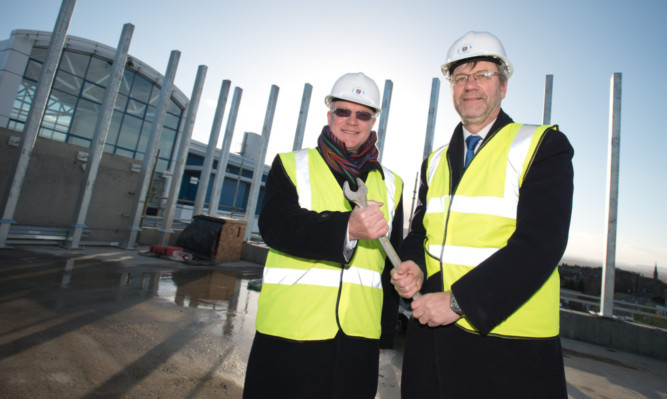A new centre at Dundee University will try to find treatments for diseases affecting millions of people worldwide.
Professor Michael Ferguson, dean of research at the college of life sciences, was speaking at the topping-out ceremony of the £12.5 million Centre for Translational and Interdisciplinary Research (CTIR).
Work on the building began in July and is scheduled to finish in November, and the project’s funders have been to the site to check on the progress.
CTIR will employ around 200 researchers when it opens, and Professor Ferguson was keen to emphasise how important it could be.
He said: “The build on the CTIR is progressing well and we are excited about how it will enhance our capabilities across key areas of research.
“This facility will help further develop the already very strong drug discovery programmes we have in the area of neglected tropical diseases, which are producing strong candidates for drug development.”
Scientists are studying African sleeping sickness, leishmaniasis, chagas’ disease, tuberculosis and malaria.
“We expect to see these leading to effective drugs for at least one of these diseases,” the professor said. We are also addressing other unmet medical needs which affect millions of people.
“What we aim to do is translate our basic research in areas like cancer, eczema and other diseases to produce chemical agents that can tackle these problems in an innovative way.
“We are extremely grateful to the organisations who have generously supported this major investment in what we are doing at Dundee.”
The college of life sciences already has more than 1,000 scientists and support staff.
The aim of the CTIR will be to break down barriers between scientific disciplines in the hope of encouraging new ways of turning research in biology and drug discovery into medicines.
A £5m grant from the Wellcome Trust and the Wolfson Foundation, is helping pay for the centre. The university has put in another £5m, with the rest coming from various Scottish funding agencies and charitable trusts.
The facade of the building will feature large anodised aluminium cladding panels incorporating artistic abstractions of four key scales of life science research molecular, organellar, cellular and tissue.
The scientific images have been translated into artwork by Professor Elaine Shemilt and her team from Duncan of Jordanstone College of Art and Design.
CTIR will also contain a gallery for art-science projects.
Professor Ferguson said: “As well as bringing together scientific disciplines, the CTIR will also help bridge art and science disciplines that has to be a good thing.”
